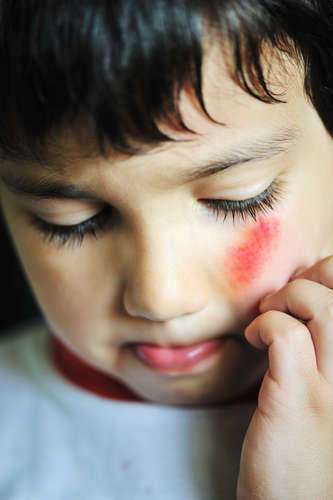Unveiling the Hidden Truth: Are Current School Safety Regulations Enough?

In recent years, the issue of school safety has garnered unprecedented attention, particularly in the wake of tragic incidents that have shaken communities across the United States. As parents, educators, and policymakers grapple with the complexities of ensuring a secure environment for students, the question arises: Are current school safety regulations sufficient to meet the challenges of an evolving landscape? This article delves into the current state of school safety regulations, their historical evolution, effectiveness, and the role of technology, while also offering recommendations for improvement.
Understanding the Current Landscape of School Safety Regulations in the U.S.
The current landscape of school safety regulations in the United States is characterized by a patchwork of federal, state, and local policies designed to protect students and staff. The federal government has implemented guidelines through agencies such as the Department of Education and the Department of Homeland Security, emphasizing the importance of emergency preparedness and response plans. However, the responsibility for enacting and enforcing safety measures largely falls on individual states and school districts, leading to significant variations in the level of safety protocols across the nation. While some districts have adopted comprehensive safety plans that include active shooter drills and mental health resources, others remain under-resourced and ill-prepared to address potential threats.
Historical Context: How School Safety Regulations Have Evolved Over Time
The evolution of school safety regulations can be traced back to the early 20th century, when concerns about physical safety primarily revolved around building infrastructure and fire hazards. The tragic events of the 1999 Columbine High School shooting marked a pivotal moment, prompting a nationwide reevaluation of school safety measures. In the years that followed, legislation such as the Safe Schools/Healthy Students Initiative and the Every Student Succeeds Act introduced funding and resources aimed at enhancing safety protocols. The rise of mass shootings and other violent incidents in schools has led to a more comprehensive approach, incorporating mental health support, threat assessment teams, and community engagement into safety strategies. This historical context underscores the ongoing need for adaptive regulations that can respond to emerging threats.
Assessing the Effectiveness of Existing School Safety Measures and Protocols
Assessing the effectiveness of existing school safety measures reveals a mixed picture. On one hand, many schools have implemented protocols that include regular safety drills, the establishment of school resource officers, and the integration of mental health services. These measures have contributed to a heightened awareness of safety issues among students and staff. However, critics argue that despite these efforts, the actual impact on preventing violence and ensuring a safe learning environment remains uncertain. Studies indicate that while some safety measures may deter potential threats, they can also create an atmosphere of fear and anxiety among students. Furthermore, the effectiveness of these protocols often hinges on the training and preparedness of staff, which can vary widely from one institution to another.
Identifying Gaps: Are Current Regulations Adequately Addressing Emerging Threats?
Despite the advancements in school safety regulations, significant gaps remain in addressing emerging threats. The rise of cyberbullying, mental health crises, and the increasing prevalence of social media as a platform for harassment and violence pose new challenges that traditional safety measures may not adequately address. Additionally, the lack of standardized regulations across states means that some schools may be ill-equipped to handle specific threats, such as active shooter situations or natural disasters. The absence of comprehensive mental health resources further exacerbates the issue, as many students grappling with emotional distress may not receive the support they need. As threats continue to evolve, it is imperative that school safety regulations adapt accordingly to ensure a holistic approach to student well-being.
The Role of Technology in Enhancing School Safety: Opportunities and Challenges
Technology plays a dual role in the realm of school safety, offering both opportunities for enhancement and challenges to implementation. Innovations such as surveillance cameras, access control systems, and emergency notification apps have the potential to improve response times and communication during crises. However, the integration of technology also raises concerns about privacy, data security, and the potential for over-policing in schools. Moreover, the reliance on technology can create a false sense of security, leading to complacency in training and preparedness. As schools navigate the complexities of incorporating technology into their safety protocols, it is essential to strike a balance that prioritizes both security and the rights of students.
Recommendations for Strengthening School Safety Regulations Moving Forward
To strengthen school safety regulations moving forward, a multifaceted approach is essential. First, policymakers should prioritize the establishment of standardized safety protocols across all states to ensure a baseline level of protection for students. This includes comprehensive training for staff and students on emergency preparedness and mental health awareness. Additionally, increased funding for mental health resources and support services is crucial in addressing the root causes of violence in schools. Collaboration between schools, law enforcement, and mental health professionals can foster a more integrated approach to safety. Finally, ongoing evaluation and adaptation of safety measures, informed by data and research, will be vital in addressing emerging threats and ensuring that schools remain safe havens for learning.
As the landscape of school safety continues to evolve, it is imperative that stakeholders remain vigilant and proactive in their efforts to protect students and staff. By understanding the current regulations, acknowledging historical context, assessing effectiveness, identifying gaps, leveraging technology, and implementing thoughtful recommendations, we can work towards a future where every school is a safe and nurturing environment for all. The responsibility to safeguard our children lies not only with policymakers but with communities as a whole, united in the commitment to fostering safe educational spaces.













